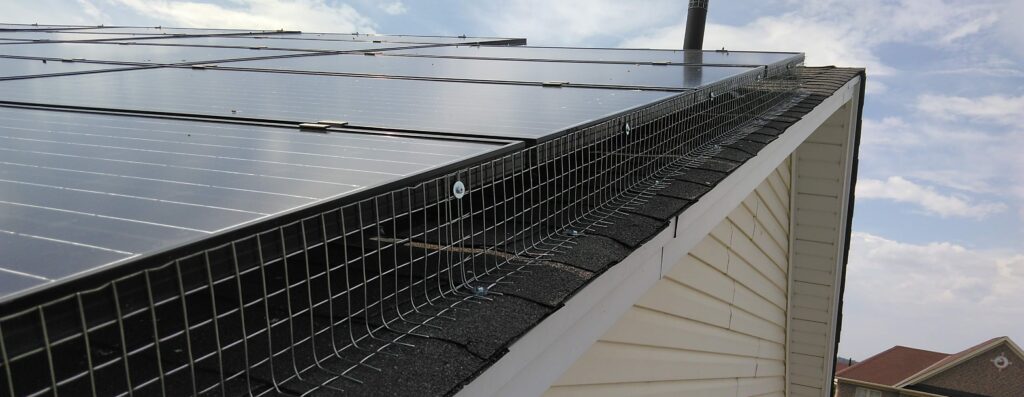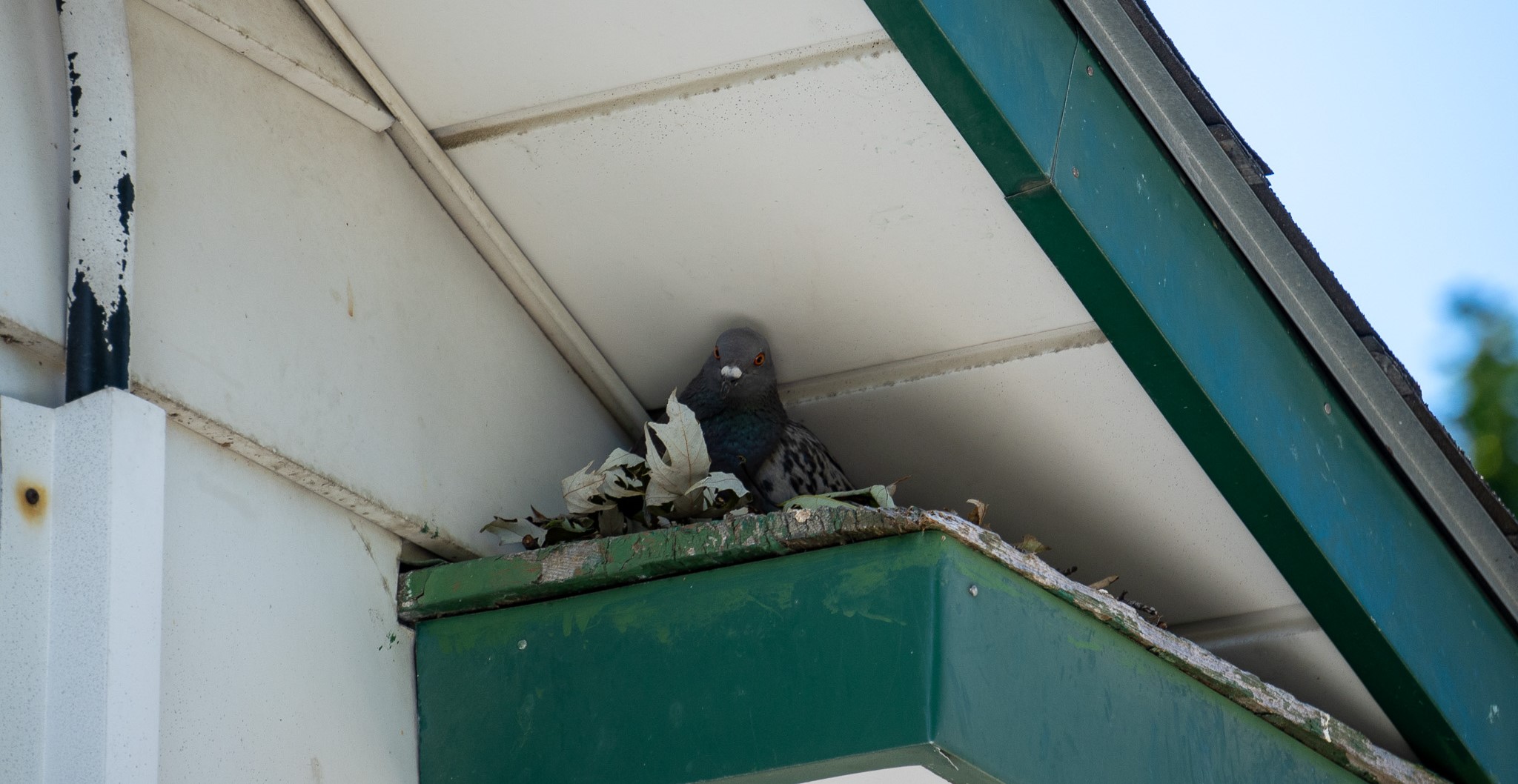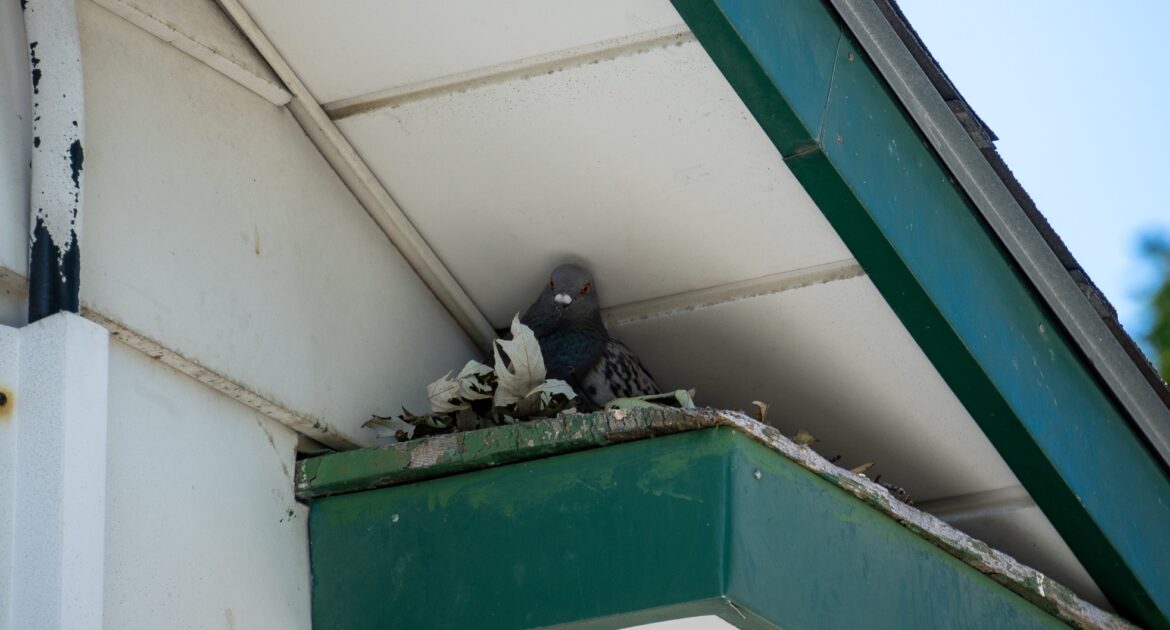The sun is shining brightly outside, and summer is well underway in the welcoming community of Severna Park. Yet, something less cheerful threatens to upset the peace of your home – a potential bird infestation. This nesting activity can lead to the larger issue of damaging property, health risks, and general nuisance and securing your property by taking preventative measures is essential.
Understanding the signs and taking steps toward prevention can dramatically reduce the risk of birds turning your home into their summer retreat.
This helpful guide gives you tips on keeping pesky birds out of your home. We’ll cover spotting their behaviors, easy ways to prevent them, and why getting Skedaddle in Maryland to help is a smart move. Plus, we’ll talk about the perks of hiring a wildlife company like ours for humane bird removal. Learn how our experts handle bird removal step by step to keep your space safe while still enjoying nature’s winged creatures.
What are Some Key Behaviors and Facts About Birds?
Understanding birds is the first step towards safeguarding your home against them. These creatures, known for their beauty and ability to fly, come with inherent behavioral aspects that can turn detrimental if they choose your property as their dwelling spot. Here are a few essential facts and behaviors associated with them:
- Birds are habitual creatures and tend to return to familiar nesting locations each year. Therefore, it is critical to prevent them from establishing a home on your property.
- Most species possess strong defensive instincts, particularly when they are protecting their nests, potentially causing harm to humans who come too close.
- Birds often use building crevices for nesting sites. Understanding the architecture of your house will aid in identifying potential nesting spots.
- Roof lines, gutters, and eaves are often attractive options for roosting and nesting.
- The feeding habits of birds differ vastly. Some species primarily feed on insects and worms, whereas others target fruits, vegetables, and grains, resulting in potential damage to vegetation on your property.
- Birds are known to communicate through loud, often unpleasant noises. Excessive chatter can indicate their presence, even if they are out of sight.
Through this basic understanding of bird behavior, we hope you are better equipped to handle the potential trouble spots around your home. Knowing what to look out for can greatly assist in maintaining the peace and cleanliness of your property.
Signs of a Bird Infestation on Your Property
As you take steps to keep your home free from unwelcome visitors, understanding the indicators of an infestation can be a great asset. Here’s what you should keep an eye out for:
- Unusual Activity – This may signify a potential issue. This includes abnormally high numbers of birds in your immediate vicinity or frequent flights back and forth to a specific area.
- Nesting – Nests in parts of your property might be, quite literally, a ‘nesting’ ground for problems. These could be in your gutters, vents, chimneys or even in trees near windows.
- Noise and Droppings – If you’re being woken up by a cacophony of bird songs every dawn or discovering an increasing accumulation of droppings around your property, this might be an indication of trouble.
- Property Damage – Deterioration to certain areas in your house can be an indication of a bird infestation. Look out for new holes in the siding, damage to insulation in your attic, or scrapes marks on your window sills.
No one wants to deal with an infestation, but knowing these signs can help you take immediate, effective steps toward preventing a small problem from becoming a massive predicament. Stay vigilant and act swiftly should you notice any indications of an avian presence in your surroundings.
What are Some Long-Term Implications of an Infestation?
Ignoring the potential long-term consequences of an infestation by winged pests can lead to severe repercussions for homeowners. Without timely and effective intervention, the presence of birds in areas like your attic or rafters can cause more than just a nuisance; it can result in substantial structural damage. The integrity of your home could be compromised, necessitating costly repairs to roofs and other critical structures to ensure safety and stability.
Furthermore, the health risks associated with these feathered intruders cannot be overlooked. Diseases such as Histoplasmosis, Psittacosis, and Cryptococcosis, carried by birds, pose serious health threats to humans, potentially leading to significant illness. In addition to health concerns, the presence of an infestation can detrimentally impact the value of your property. Signs of wildlife issues are red flags for potential buyers, often leading to decreased property appeal and market value. Not to mention, the incessant noise from chirping and fluttering can disrupt the peace of your living environment, affecting sleep patterns and overall quality of life.
Taking proactive measures through proper bird-proofing techniques is crucial in averting these dire outcomes. Addressing the earliest indicators of an infestation can save you from the extensive damage and inconvenience of dealing with long-term effects. Remember, prevention is not only more straightforward but also far less costly than remedying the consequences of a situation left uncontrolled.
What are Effective Tips to Bird-Proof Your Property?
As you seek to maintain the serenity of your home, bird-proofing your property becomes a necessity, particularly during the summer season when birds are most active. Here are a few tried-and-true methods:
- Maintain a Clean Yard: Debris and food scraps attract a wide variety of wildlife, including birds. By keeping your yard tidy, you’ll greatly reduce the likelihood of an unwanted bird congregation.
- Use Bird Spikes: These are a humane and effective deterrent. They make it uncomfortable for birds to perch or build nests on your ledges and rooftops, which discourages them from lingering.
- Install Netting: Lightweight, durable, and easy to install, netting is a fantastic barrier for birds, preventing them from nesting in your greenery.
- Seal Entry Points: By sealing possible entries to your home, such as openings in your roof or siding, you can deter birds from nesting within your residence.
- Remove Bird Feeders: If there’s no food readily available, birds are less likely to frequent your property.
- Use Reflective Objects: Reflective items can deter birds as the reflective surfaces can confuse them, making your property less appealing.
- Minimize Water Sources: Birds are attracted to easily accessible water sources. By ensuring no standing water is available, you decrease the overall appeal of your property.
- Invest in a Decoy Predator: Decoy predators like plastic owls or snakes can scare off smaller birds, effectively making your home a less appealing habitat.
The best strategy to bird-proof your property depends on the specific problem you are facing. However, these steps can help you minimize any potential issues, lessening the chance of a significant predicament. Remember, prevention is always easier and less costly than removal.
How to Remove Birds from Your Home, Step by Step with a Wildlife Technician?
Handling a worrisome bird issue on your premises can be daunting, but professional wildlife technicians are here to simplify the process for you. Let’s break things down into manageable steps for effective removal and subsequent protection.
- Evaluate The Situation: The first step is assessing the problem. Whether it’s noise in the attic or droppings scattered around your property, a thorough examination will give specific insights.
- Identify the Species: Different varieties may require different removal techniques. Identifying the type of bird helps customize the plan of action.
- Strategize An Appropriate Plan: Depending on the species and the intensity of the issue, a proper roadmap for removal will be created, ensuring minimal disturbance to the birds while prioritizing your home’s safety.
- Execute the Plan: Now, it’s time to carry out the strategy. This may involve different methods like netting, spiking, or avian-specific, humane deterrents.
- Preventative Measures: After successful eviction, implementing measures to avoid recurrence is crucial. This may include proofing potential nesting spots and educating homeowners on preventing future issues.
- Monitor: Regular follow-ups and monitoring ensure our efforts bear fruit. It will verify the non-reoccurrence of the problem.
Addressing an issue entails careful consideration and swift action. Trust in professional hands to make your home a safe space. It’s all about approaching the problem with strategic planning, effective execution, and careful follow-up. Experimenting with DIYs is discouraged as these issues need expert handling to secure long-term results.

Benefits of a Professional Wildlife Technician
Addressing challenges within our homes, especially those involving wildlife, necessitates a clear understanding of the issue at hand and recognizing when it’s time to call in the experts. When dealing with avian visitors, enlisting a professional wildlife technician presents a host of benefits that far outweigh the initial temptation to handle the problem on your own. These professionals bring a level of expertise and efficiency to the table that ensures the issue is resolved swiftly and effectively.
A professional wildlife technician not only understands bird behavior intricately but also employs humane methods to ensure the safety of both the animal and the inhabitants of the home. They are well-informed about the legal aspects of wildlife control, ensuring that all actions taken are in compliance with state and federal laws. What sets these experts apart is their ability to deliver long-term solutions.
They don’t just provide a temporary fix; they get to the root of the problem, addressing it fully to prevent recurrence. Furthermore, they offer invaluable advice on how to bird-proof your property, thereby mitigating the risk of future invasions. Opting for professional services guarantees not only the resolution of your current predicament but also equips you with strategies to maintain a bird-free environment. This proactive approach proves to be a wise investment, saving you from the cycle of ineffective DIY attempts and ensuring your home remains a peaceful sanctuary.

Skedaddle Humane Wildlife Control – Your Partner in Bird Control
When it comes to dealing with a bird problem, one must appreciate the complexities involved. Taking steps on how to bird-proof your house involves being informed and proactive. However, learning how to prevent birds from nesting on your property can be an arduous task. Furthermore, it requires a certain level of expertise and compassion to ensure that these creatures are treated humanely.
This summer, protect your Severna Park property by engaging the best – Skedaddle Humane Wildlife Control Severna Park, located in Anne Arundel County, Maryland. We utilize proven, humane methods for bird removal and preventive solutions, thus ensuring your peace of mind.
Contact us today to request an immediate consultation or a quote. Allow us to provide you comprehensive insights into our bird infestation management strategies, explicitly tailored to your property’s unique requirements. Empowering homeowners, one bird-free property at a time – that’s our commitment!




